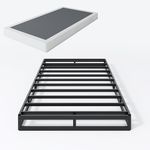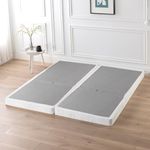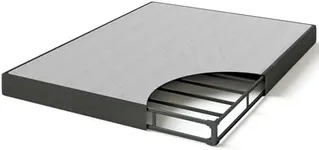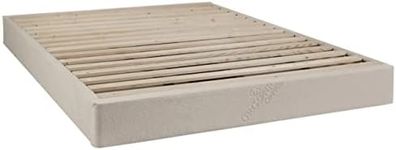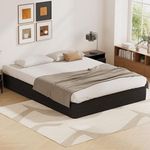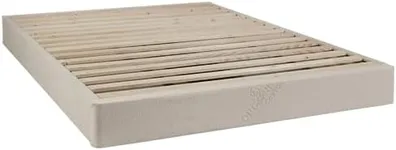Buying Guide for the Best Low Profile Box Springs
Choosing the right low-profile box spring is essential for ensuring a comfortable and supportive sleep experience. A low-profile box spring is a type of bed foundation that provides support to your mattress while maintaining a lower height compared to traditional box springs. This can be particularly useful for those who prefer a lower bed height or have difficulty getting in and out of higher beds. When selecting a low-profile box spring, it's important to consider several key specifications to ensure it meets your needs and preferences.HeightThe height of a low-profile box spring typically ranges from 4 to 6 inches. This spec is important because it determines the overall height of your bed, which can affect both aesthetics and accessibility. If you prefer a bed that is closer to the ground, a lower height (around 4 inches) may be ideal. On the other hand, if you want a bit more elevation but still less than a traditional box spring, a height closer to 6 inches might be better. Consider your personal comfort and the height of your mattress when choosing the right height for your box spring.
MaterialLow-profile box springs can be made from various materials, including wood, metal, or a combination of both. The material affects the durability, weight, and support of the box spring. Wooden box springs are often sturdy and provide a traditional look, while metal ones are typically lighter and more modern. Some box springs combine both materials to offer a balance of strength and weight. Think about the longevity and style you prefer, as well as how easy it will be to move the box spring if needed.
Support TypeThe support type refers to how the box spring is constructed to support the mattress. Common types include slatted, solid, and grid designs. Slatted box springs have wooden or metal slats that provide a flexible support system, which can be beneficial for airflow and mattress longevity. Solid box springs offer a firm, continuous surface that can provide more uniform support. Grid designs combine elements of both, offering a mix of flexibility and firmness. Consider the type of mattress you have and your personal preference for support when choosing the support type.
CompatibilityCompatibility is about ensuring that the low-profile box spring fits well with your existing bed frame and mattress. This spec is crucial because an incompatible box spring can lead to discomfort and reduced mattress lifespan. Check the dimensions of your bed frame and mattress to ensure the box spring will fit properly. Additionally, some mattresses, like memory foam or latex, may require specific types of support, so make sure the box spring you choose is suitable for your mattress type.
Ease of AssemblyEase of assembly refers to how simple it is to put the box spring together. This is important because a complicated assembly process can be frustrating and time-consuming. Some low-profile box springs come pre-assembled, while others require some setup. Look for options that come with clear instructions and all necessary tools. If you prefer a hassle-free experience, opt for a box spring that is easy to assemble or comes pre-assembled.
Weight CapacityWeight capacity indicates how much weight the box spring can support, including the mattress and the sleepers. This spec is important to ensure the box spring can handle the combined weight without sagging or breaking. Low-profile box springs typically have weight capacities ranging from 500 to 1,000 pounds. Consider the weight of your mattress and the number of people who will be using the bed to choose a box spring with an appropriate weight capacity.




